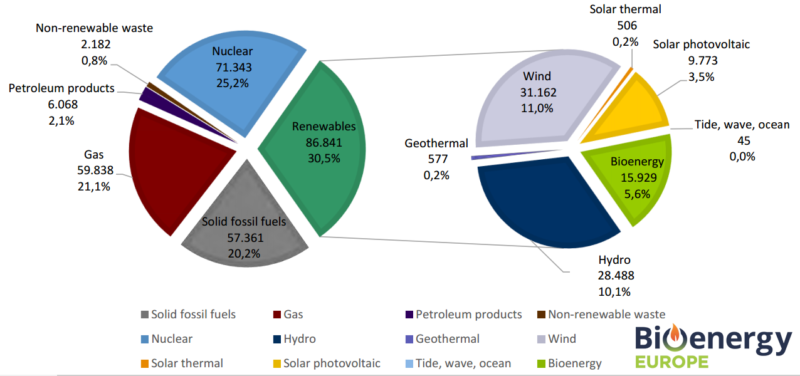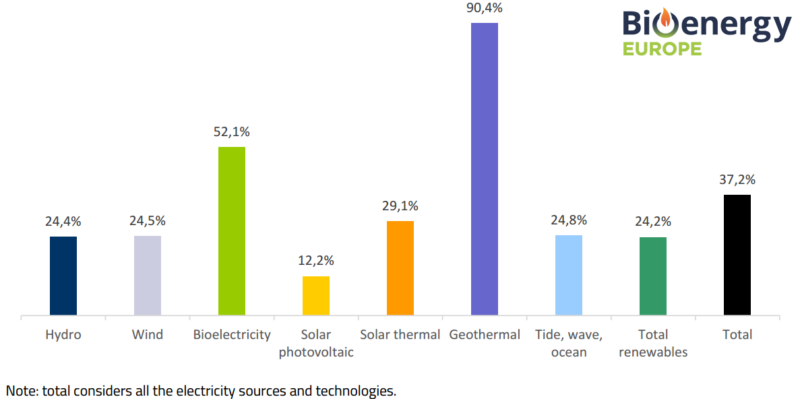This report of the European Association Bioenergy Europe provides information on the development of the electricity and renewable electricity sector in Europe. A separate chapter of the report is devoted to the production of electrical energy from biomass and biofuels. The share of electricity from biomass in gross electricity gneration in EU28 is 5.6% (15,929 ktoe, 2017), taking 3rd place among all RES after Hydro and Wind.
Most of the electricity from biomass is generated in Germany (4.379 tktoe), Great Britain (2.740 ktoe), Italy (1.666 ktoe), Sweden (1.038 ktoe) and Finland (1.020 ktoe).

Gross electricity generation by product type in the EU28 in 2017 (in ktoe)
Leaders in installed capacity (over 1000 MW) are Germany (10,007 MW), UK (6053 MW), Sweden (5389 MW), Italy (3859 MW), France (2075 MW), Denmark (2004 MW), Finland ( 1966 MW), Austria (1,560 MW), Spain (1,144 MW), the Netherlands (1,122 MW) and Belgium (1,036 MW). Such countries as Poland (993 MW) and Czech Republic (829 MW) almost reached the leaders in installed capacity.
For reference: In Ukraine, as of 2018, the total installed capacity of facilities generating electricity from biomass was about 100 MW (59,1 MW TPP/CHP on biomass, 22,6 MW of biogas plants, 16,7 MW of biogas from landfill projects; Source: presentation of the UABio Head of the Board Georgii Geletukha at RENPOWER Ukraine 2019).
Bioelectricity’s load factor is more than twice higher than the average for renewables. Indeed, bioelectricity is dispatchable and allows to adjust production to stabilise the grid. The stability and reliability of the grid is a big challenge for the energy transition due to the large increase of non-dispatchable technologies (wind and solar). Bioelectricity is a very viable solution for the EU being a dispatchable, not site-specific and affordable technology. The average load factor for bioelectricity was stable in 2017 compared to 201 6 and, as shown in table 6, it experienced the third largest growth rate within renewables in terms of installed capacity, proving that the advantages of bioelectricity technologies are already being recognised.

Average load factor for the different renewable technologies and for the total installed capacities in the EU28 in 2017
Every year since its debut release in 2007, Bioenergy Europe’s Statistical Report has provided an in-depth overview of the bioenergy sector in the EU-28 Member States. Bioenergy Europe’s Statistical Report has been enriched each year with new figures and information, collecting unique data on the developments of the European bioenergy market from a growing number of international contributors. Bioenergy Europe is therefore able to develop a detailed report that helps industry leaders, decision makers, investors and all bioenergy professionals to understand the situation of bioenergy in Europe.
Download Statistical Report Bioelectricity from Bioenergy Europe website